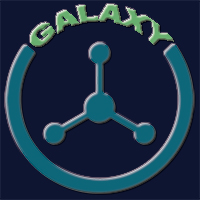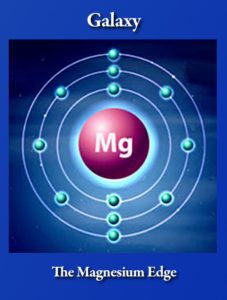My name is Ben Kroposki and I’m the director of the Power Systems Engineering Center at the National Renewable Energy Laboratory. Today I’m going to talk about autonomous energy systems and our thoughts around reimagining optimization and control of future energy systems.
If we think about the transformation that is happening with the power system, we are transitioning from our current power system, largely based on large scale power plants like hydro, nuclear, coal and natural gas.
At the heart of these power plants are synchronous generators. And typically power is flowing in one direction from these large central station plants out to the customers. The system is centrally controlled and then generation follows the demand.
As we look to future power systems, we’re starting to see a lot of new technologies being integrated into this system.
First off, are increasing levels of wind and solar. These are variable generators with their output based on weather conditions. Also, these technologies are a little different than the conventional generation in that they typically have power electronic converter interfaces to connect to the grid. There’s also more use of communications controls and data and information – so called smart grids.
This is enabling a lot more efficiency from the grid itself. But it also introduces interoperability and cyber security issues. There’s also a wide range of new distributed technologies like electric vehicles, distributed storage and flexible loads.
In addition, there are increasing interdependencies between the electricity grids and other infrastructure such as the natural gas grid and communications infrastructure. Finally, all of this is leading to a much more highly distributed and much more complex to control and operate energy system.
As we started to look at how to develop advanced controls for the power grid, we noticed similarities with several other applications, including transportation, building systems and renewable technologies. We noticed that there was a set of common problems, including nonlinear controls, optimization, advanced analytics and complex systems.
We need to understand how we could control operation of these types of systems in real time and these systems are always varying with time. In addition, we needed to be able to handle hundreds of millions of control points.
Also, things like artificial intelligence and machine learning techniques are needed to help with the massive amounts of data and information. So we wanted to make sure that in order to control millions of devices, we developed a hierarchical strategy that linked home and community scale to the distribution scale to transmission scale systems.
Finally, we needed to use data analytics to make best use of all the data and information that is around these systems, although they’re not all time synchronized.
So at the end of the day, we needed to create an integrated system that allowed the integration of all energy sources. This includes the electric power grids themselves, grid interactive efficient buildings, vehicles and mobility, advanced wind plants and advanced solar plants. We needed to make sure we came up with solutions that are scalable to be able to allow distributed control of millions of devices and perform real time optimizations.
Finally, we wanted to integrate all the data and information that was available to help optimize these types of systems.
So the pictures that you see here represent a large wind farm which each of each of these arrows representing an individual wind turbine. And the arrow direction is the direction the wind turbine is pointing into the wind to generate as much power as possible. Now, typically wind farm controls are based on the local measurements.
As you can see from the little picture there of the wind turbine and the arrow pointing to where it’s making a measurement of the wind speed and direction. So, in typical controls you can see on the left hand side, as the wind starts to change direction, the wind turbines start to search for which way the wind is blowing.
If you look at the figure on the right, you can see that the wind turbines are acting in a much more synchronized manner and are seemingly finding the wind direction as a whole. So how are we able to do this?
First, we take the entire wind farm and break it into smaller cells. Then interior to each cell, we have the wind turbines communicate with each other and come to consensus on which way the wind is blowing. Once they do that, they pass that information to neighboring cells.
And this way, the entire wind farm can come to consensus on which way the wind is blowing. We demonstrated that with this technique, we were able to solve the optimization routines much quicker. Using central control, it took about 13 minutes to solve. By using these distributed control techniques, it only took us around 2 seconds to solve.
Next, we’ll take a look at how these start to integrate together through autonomous energy grids.
One of the things we really wanted to do was understand a really large scale deployment of distributed resources. So, we took as an example, the San Francisco Bay Area. This is a very complex distribution level grid with over 10,000,000 electrical nodes. If you think about how different distributed resources could be integrated into this system, you have electric vehicles, chargers, building loads and local PV.
If each customer had all of these devices, you could be talking 10,000,000 to 20,000,000 controllable devices on the grid just inside the San Francisco Bay Area itself.
We looked at how to take their power system and do some of this distributed optimization. We took the natural strategy of looking at large, complicated distribution circuits as you can see on the left hand side and breaking that into smaller areas. Then doing optimization and control on that and then bringing those solutions back together. On the right hand side, you can see that if we even went to smaller scale cells, it actually provided a much higher speed improvement in terms of doing the optimization while maintaining the accuracy.
We developed a large scale simulation platform that allowed us to evaluate hundreds of thousands of devices. In this case, around 400,000 PV systems shown by the yellow dots; around 400,000 building loads shown by the blue dots; and then 10,000 electric vehicles and around 200 charging stations.
This particular figure is showing the simulation running through time, so around 2 hours compressed into several seconds. But we were able to develop a complex multi domain energy simulation of the San Francisco Bay Area with millions of controllable assets running distributed hierarchical controls at around one second time steps. This demonstrated, at least in simulation, that we could deploy these large scale distributed control algorithms on extremely complex systems.
So let’s tie this all together with the concept of autonomous energy grids. As you can see from the figure, when we use centralized control represented by these blue rings, we get a voltage profile that isn’t optimized.
If we look at ways that we can take the entire grid and operate as coordinated cells, we can have these cells communicate with each other and better optimize a voltage profile. This is important when we look at integrating large levels of distributed resources.
To respond to disruptive events and recover more quickly using distributed controls. We’re also looking at how to take a bottoms up approach to integrating buildings and transportation infrastructure through autonomous urbanization. Both of these ideas are continuing improvements in autonomous energy systems.
With that, I’ll say thank you. And if you’d like more information, please visit this website: https://www.nrel.gov/grid/autonomous-energy.html


